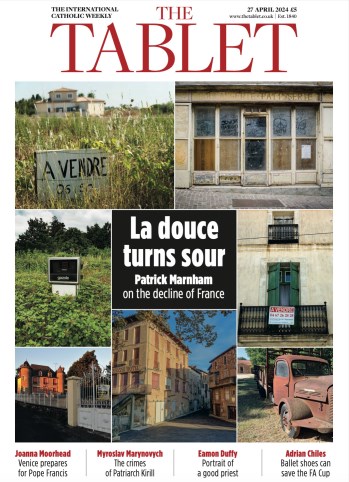It is hard to deny that the Christian community’s view of itself as “Christendom”, now transformed into “Europe”, altered radically between the appearance of Luther in 1517 and the end of the Thirty Years War in 1648. The picture drawn here of the emergence of the notion of “Europe”, as it came to replace that of “Christendom”, delves widely for inspiration, the result being one which takes in, and moulds into a credible whole, social, cultural, religious and economic elements. While the author’s view of late-medieval Christendom may be a little too cosy (the Great Schism, reiterated calls for ecclesiastical reform and the growth of heresies such as that of John Wyclif in the late fourteenth century surely indicated that all was not well), there can be no doubt that the sense of social cohesion nurtured by the Christian community was to suffer a heavy blow, if not a fatal fracture, by the mid sixteenth century, a fracture which would continue to develop in the coming decades in large areas of Europe. The spiritual authority of the popes and the Church was being replaced by that of the Bible.
Furthermore, in much of Europe (particularly in its northern regions) the growing power of the local wielder of authority, monarch, prince or consistory, was having the final word. The “brand” of religion to be practised reflected the choice of those in power; they were, in a sense, the new “popes”, dictating and regulating religious beliefs and practices. In an era of religious controversy, who was to decide which of a competing range of “truths” was the true one? The Bible? Tradition or the teachings of the Fathers? Translations, as had long been recognised, could only create problems regarding the nature of truth. Religion increasingly became a matter for the state, with dissent forming a threat to the safety of what were becoming the dominant political and religious units of the “new” Europe.
Mark Greengrass, professor emeritus at the University of Sheffield, writes very effectively on the birth of these emerging and assertive states, whose growth marked the demise of the medieval empire and, with it, Christendom as it had once been. The future of these secular territorial units often came to depend on the legitimate descendants of a particular family. Lineage mattered greatly, as the popularity of family trees conveying visually a dynastic/political message shows. So states came to be distinguished from one another by the families which ruled them, as well as by religious allegiance, laws and language (Latin, the language of the old Christianity, losing out to the up-and-coming vernacular). In addition, there came into being territorial Churches, with their strong emphasis upon a community with local, rather than universal, links, which soon led to problems of “coexistence”. “Living with religious divisions” is the title given to one of the book’s most interesting chapters. Serious religious differences lay at the heart of the long war of attrition named the Thirty Years War (1618-48), the first crisis faced by the new Europe, at one level a war between countries or princes, at another a civil war within the Christian community. In a world of growing tensions, peaceful coexistence on any scale was difficult to achieve. How to deal with those who cocked a snook at domestic authority by not attending church was a real one for the authorities in Elizabethan and Jacobean England and elsewhere. Should “non-conformity” be treated as “indifference” or as personal rebellion? However regarded, it reflected an attitude hostile to the ruler’s authority, since conformity expressed the unity of the community as well as the right of the state to demand obedience from its people.
The nature of the state provoked much discourse, both theological and political. What was new was the scale on which such writings appeared, reflecting important developments, particularly the propagation of ideas and knowledge in all kinds of formats, a development encouraged by the printed word, which helped to make this the great age of the pamphlet and, consequently, of polemic, too. The discoveries of the seventeenth-century scientific revolution, notably that the heart was the “central” organ which gave the body its sense of motion, encouraged the idea that the state was an observable and explicable mechanism open to observation, rather than a more passive “commonwealth with a soul”. Aristotelian influence was in decline, making the very raison d’être of the state, its functions and its methods of working, the subject of much debate and discussion. Under humanist influence, the value of education was better appreciated, while the academic study of politics emerged as a “growth subject” in these turbulent times. The list of writers contributing to it is a long and distinguished one.
This book, the product of a high standard of creative historical scholarship founded on years of study of archival and literary evidence by a much respected observer of the sixteenth-century scene, reflects a fine grasp of the outcome of modern research and research methods. It is Mark Greengrass’ achievement to have imposed upon his subject a sense of order which draws the reader along, while underlining the disparate nature and diverse geographical origins of the evidence, which emphasise(s) that there was no single “Reformation experience”. He may be commended, too, for having written a book which, by illustrating human situations and predicaments, places men and women centre stage, while recognising the importance of ideas and their influence upon the world of the time. It is characteristics such as these which earn the book the five stars which it surely deserves.
11 September 2014, The Tablet
Christendom Destroyed: Europe 1517-1648
Divided and ruled
La douce turns sour
 Loading ...
Loading ...
Get Instant Access
Subscribe to The Tablet for just £7.99
Subscribe today to take advantage of our introductory offers and enjoy 30 days' access for just £7.99



What do you think?
You can post as a subscriber user...
User Comments (0)